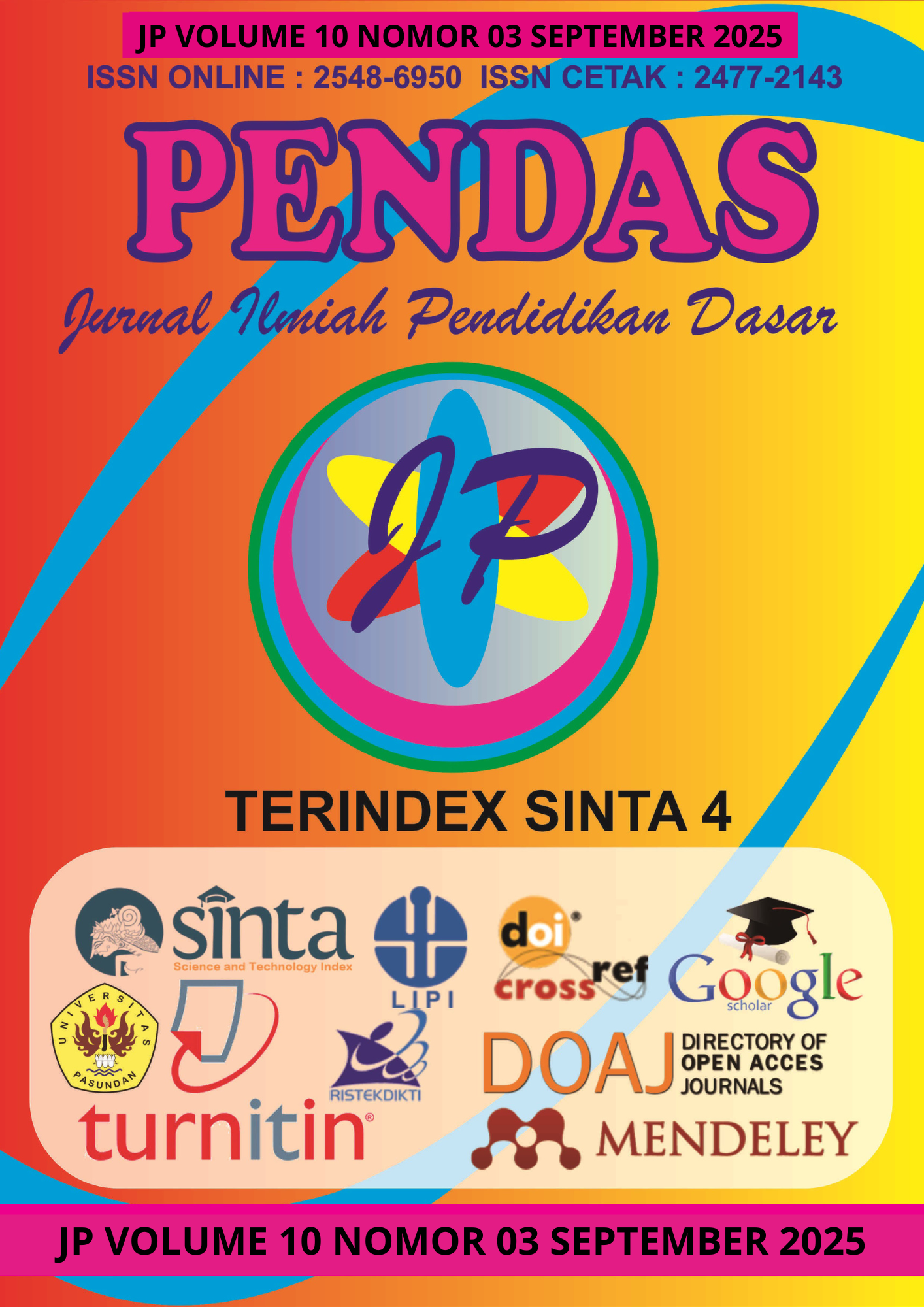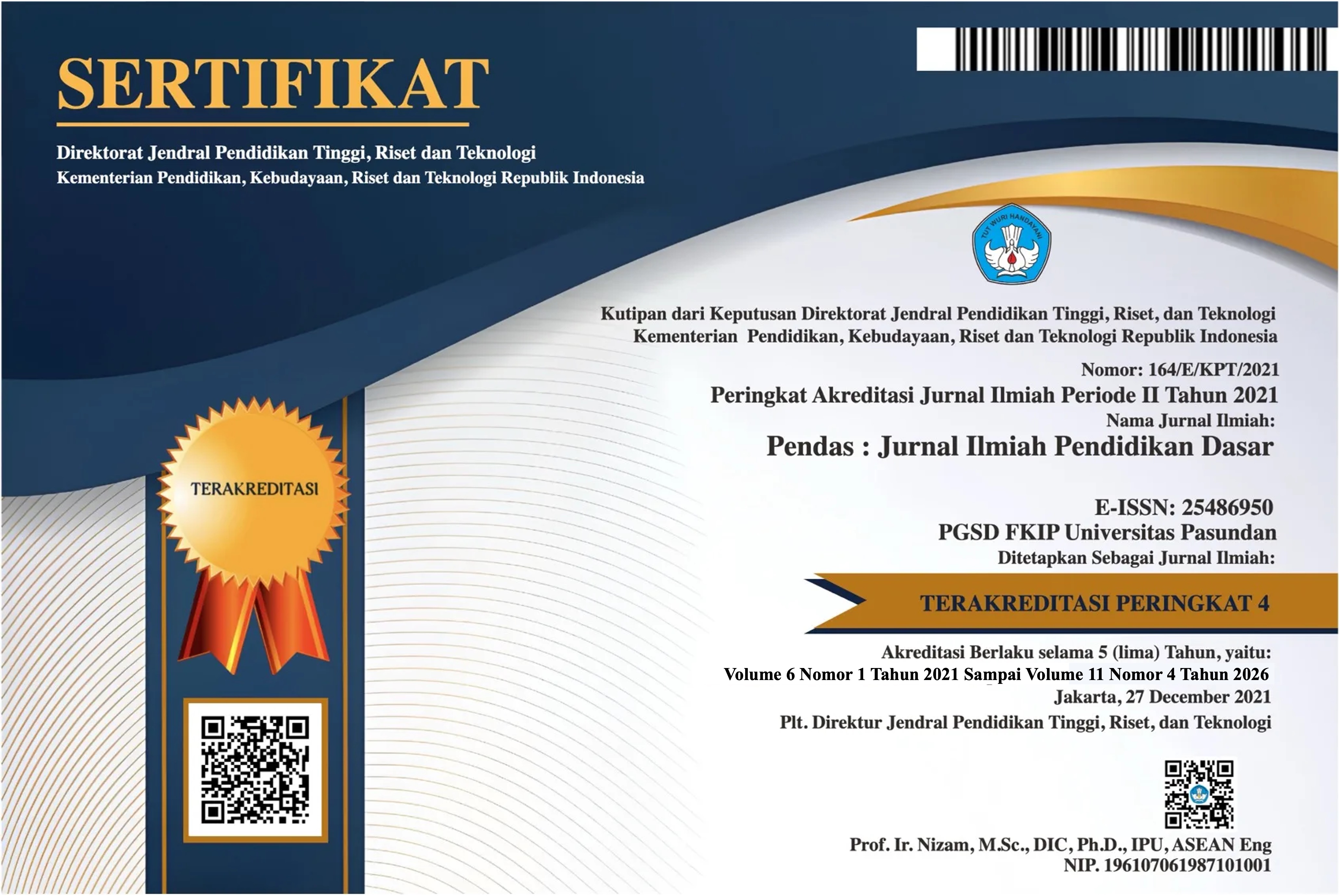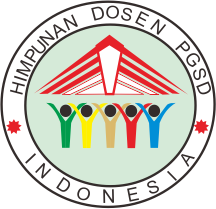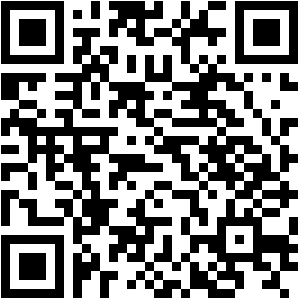ANALISIS KEMAMPUAN BERBICARA MELALUI METODE BERCERITA PADA MATA PELAJARAN BAHASA INDONESIA SISWA KELAS II SD NEGERI KALIBUNTU
DOI:
https://doi.org/10.23969/jp.v10i03.34698Keywords:
Speaking Skills, Storytelling Method, Indonesian LanguageAbstract
Speaking skill is one of the essential language competencies that support the learning success of elementary school students. However, in reality, most second-grade students still face difficulties in expressing ideas coherently, lack self-confidence, and have limited vocabulary use. This study aims to analyze the speaking skills of second-grade students at SD Negeri Kalibuntu through the application of the storytelling method. The research employed a descriptive qualitative approach with second-grade students of SD Negeri Kalibuntu as the subjects. Data were collected through observation, interviews, and documentation, covering several indicators of speaking skills, including fluency, confidence, vocabulary use, expression, intonation, and comprehension of the story. Data analysis was carried out through data reduction, data display, and conclusion drawing. The findings revealed that the storytelling method improved students’ speaking skills across all indicators. Students became more fluent in delivering stories, more confident in performing in front of the class, used new vocabulary, and showed more appropriate expressions and intonation. Thus, the storytelling method is proven to be effective in enhancing elementary students’ speaking skills.
Downloads
References
Alrajafi, G., Wahyuningsih, Y., & Maretha, C. (2022). CONTRIBUTING FACTORS IN DEVELOPMENT OF SPEAKING SKILL. SIGEH ELT : Journal of Literature and Linguistics, 2(1), 1–8. https://doi.org/10.36269/sigeh.v2i1.778
Bylkova, S., Chubova, E., & Kudryashov, I. (2021). Public speaking as a tool for developing students’ communication and speech skills. E3S Web of Conferences, 273. https://doi.org/10.1051/e3sconf/202127311030
Lampinen, A. K., Chan, S. C. Y., Dasgupta, I., Nam, A. J., & Wang, J. X. (2023). Passive learning of active causal strategies in agents and language models. Advances in Neural Information Processing Systems, 36(NeurIPS).
Larina, E., Garkusha, N., Dutchina, O., & Korneva, V. (2021). The development of intonational-expressive reading as a significant professional competence among students receiving the specialty teacher-speech therapist. SHS Web of Conferences, 101, 03051. https://doi.org/10.1051/shsconf/202110103051
Mashuri, C., Fadli, R. I., Permadi, G. S., & Mujianto, A. H. (2021). Developing Indonesian Learning Game Applications for Elementary School Students Using the Prototyping Method. Turkish Journal of Computer and Mathematics Education (TURCOMAT), 12(4), 918–928. https://doi.org/10.17762/turcomat.v12i4.580
Nurjanah, A. P. (2020). Metode Bercerita Untuk Meningkatkan Kemampuan Berbicara Pada Anak Usia 5-6 Tahun. Jurnal Ilmiah Potensia, 5(1), 1–7.
Putri, S. A., Amri, S., & Ahmad. (2020). the Students’ Difficulties Factors in Speaking. J-Shelves of Indragiri (Jsi), 1(2), 115–129. https://doi.org/10.32520/jsi.v1i2.1059
Saifudin, A. F., Wagiran, W., & Haryadi, H. (2022). Identifikasi Keterampilan Berbahasa Siswa Kelas III dalam Pembelajaran Bahasa Indonesia. Journal of Elementary School (JOES), 5(2), 361–366. https://doi.org/10.31539/joes.v5i2.4262
Tabakova, H., & Pelaheichenko, M. (2023). STORYTELLING AS A MEANS OF ACTIVATING STUDENTS’ COGNITIVE ACTIVITY IN THE MODERN EDUCATIONAL SPACE. Scientific Papers of Berdiansk State Pedagogical University Series Pedagogical Sciences, 1(1), 165–172. https://doi.org/10.31494/2412-9208-2023-1-1-165-172
Yanto, F., & Chudari, I. N. (2020). Peran Orang Tua Siswa Kelas IV SD Negeri Sumuranja 2 dalam Membantu Belajar di Rumah. Jurnal Persada, 4(2), 60–67.
Zarei, N., Quek, F., Chu, S. L., Chan, A., & Howell, J. (2022). Designing Interactive Contextual Cues for Children’s Video-Stimulated Writing. Proceedings of Interaction Design and Children, IDC 2022, 196–205. https://doi.org/10.1145/3501712.3529727
Downloads
Published
Issue
Section
License
Copyright (c) 2025 Pendas : Jurnal Ilmiah Pendidikan Dasar

This work is licensed under a Creative Commons Attribution 4.0 International License.



















